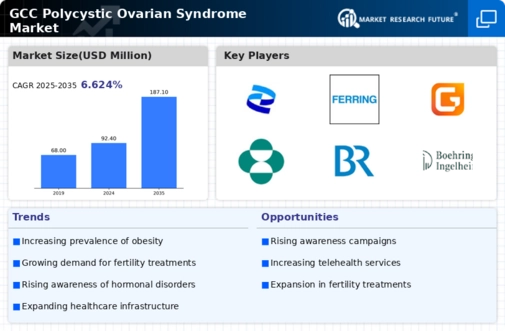The GCC Polycystic Ovarian Syndrome Market has been characterized by a complex landscape driven by diverse factors, including increasing awareness regarding women's health, advancements in treatment modalities, and a growing pool of healthcare providers specializing in gynecological disorders. This market is gaining traction as more women are diagnosed with PCOS, leading to a heightened demand for effective pharmaceuticals and therapeutic solutions tailored for this condition. The competitive environment features a blend of established pharmaceutical giants and emerging players, each vying to capture market share with innovative products and comprehensive treatment strategies.
Companies are focusing on research and development to enhance their portfolios and meet the unique needs of women suffering from PCOS in the GCC region.Pfizer has established a notable presence within the GCC Polycystic Ovarian Syndrome Market, leveraging its extensive expertise in pharmaceuticals and commitment to women's health. The company's strengths lie in its robust research pipeline and established brand reputation, which resonates well with healthcare providers and patients alike.
Pfizer’s strategic collaborations with local healthcare entities and strong distribution networks have facilitated its ability to penetrate the market effectively. Moreover, the company invests in educational campaigns targeted at healthcare professionals to improve understanding and management of PCOS, aiming to position itself as a leader in providing not only medications but also comprehensive healthcare solutions in the region.
Ferring Pharmaceuticals operates with a focused strategy in the GCC Polycystic Ovarian Syndrome Market, known for its commitment to reproductive medicine and women's health. The company offers a range of pivotal products that cater to PCOS management, emphasizing treatments that address both hormonal balance and fertility issues. Ferring Pharmaceuticals has made significant strides in building a market presence through partnerships with various healthcare institutions, ensuring its therapies reach those in need.
The company's strengths encompass its continual investment in research aimed at enhancing treatment options for PCOS patients, supplemented by a dedicated sales force that actively engages with healthcare providers. In recent years, Ferring has also explored mergers and acquisitions to bolster its product portfolio and expand its footprint in the region, further solidifying its position in the GCC market.
























Leave a Comment